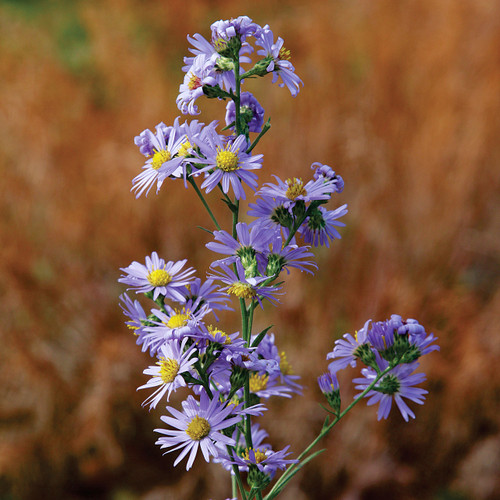This showy aster is often found in dry, open woodlands and can add late season color to shaded flower beds. Recurved bracts below the flowers along with the numerous (20 to 35 or more) ray flowers can help identify this plant in the wild. Numerous pollinators will appreciate the nectar and pollen provided by manyray aster. Deer will feed on the plant, and occasional browsing is tolerated; however, areas with dense deer populations may not be suitable for this plant.
Uses: Bees, butterflies, late season color, drought tolerant
Bloom time: July - November
Height: 12 to 42 inches
Space: 12 to 24 inches
Sun: Sun to shade
Moisture: Dry to average







